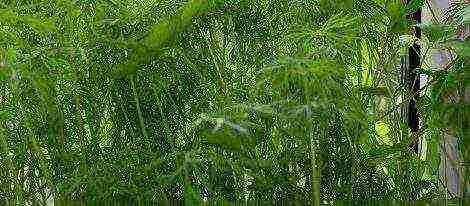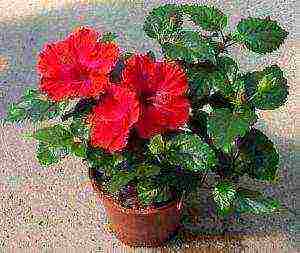Content
Modern summer cottages, as a rule, are small, mainly 6 acres, and I want to not only allocate space for a garden and a vegetable garden on them, but also arrange a small house, outbuildings, equip a recreation area with a gazebo, and so that the barbecue also fits ... Nevertheless, the main thing is still the presence on the site of beds with vegetables and herbs. There is only one problem - in the presence of all buildings, there are very few sunny places on the site.
That is why gardeners immediately have questions about how to properly use shaded areas and what vegetables can be planted in the shade.
General rules for planting in a small area
- Fruit trees are placed along the fence along the perimeter of the site.
- Shrubs are planted in rows in the center of the site, thereby delimiting it into zones.
- For vegetables and flowers, the remaining free places are chosen, taking into account which of them are shade-loving and which ones prefer the sun's rays.
- Shade-loving vegetables, as a rule, compensate for the lack of sun by increasing requirements for the composition of the soil and its moisture. Therefore, they must be regularly watered and fed, especially during the ripening period.
Little cultivation tricks
What should you do if buildings and overgrown trees give a lot of shade on the site, and therefore the question is - what vegetables to plant? Oddly enough, one should not despair in this case.
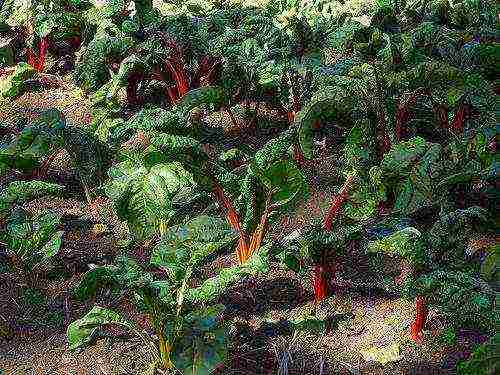
Yes, you will not win a competition for a giant squash or a huge tomato, but you can still get a decent harvest, unless a little later than usual. Indeed, for most edible crops, it is enough to be in the sun for no more than four hours a day, and many leafy plants require even less.
If you have problems with sunlight on the site, you should start by analyzing the situation that has arisen, and then move on to deciding what vegetables can be planted in the shade.
- You will be pleasantly surprised to learn that many parts of your site receive much more light than you thought. Get a photometer or light meter, which are always available at garden shops. With the help of these devices, you can easily measure the illumination of any place and determine what can be planted there.
- If you doubt that certain vegetables will grow normally on the site you have chosen, conduct such an experiment. Place plants in pots and place them in the area before breaking up the beds. Watch them grow. If you see that they are too stretched, have pale greens or do not bear fruit, move them to another place.
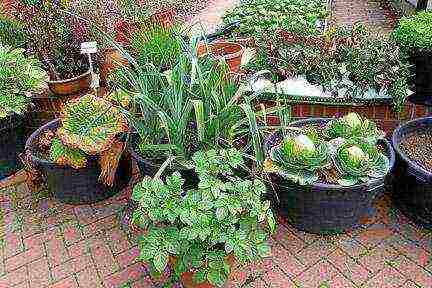
This method of growing potted plants in small areas is quite popular, especially if the groups of pots are placed on small platforms equipped with wheels. Firstly, you can constantly grow vegetables and greens in this way, moving the platform with pots during the day to sunny areas, and secondly, determine the most favorable places for their growth.
- A good result for organizing more sunny places is given by changing the illumination under the trees.By thinning the crown of a tree, especially by removing the lower branches, you can get diffused sunlight. And here you will no longer have to think about what to plant in the shade, since a lot of different plants can be planted in the created penumbra.
What vegetables are not particularly demanding for sunlight?
When choosing which vegetables to plant in the shade, be aware that there are not so few of them.
Beans, peas and bush beans thrive in these conditions and yield a good harvest.
Shaded areas under trees are suitable for growing root crops such as beets, carrots, radishes and radishes.

The cruciferous family - broccoli, cauliflower, cabbage, and cabbage - also thrive in shaded areas, especially when planted in rows east-west and watered and weeded regularly.
Even some varieties of tomatoes, cucumbers and zucchini, which are considered to be sun-loving, tolerate shade normally, especially in the southern regions. True, the timing of their ripening is slightly postponed.
What leaf crops are grown in the shade?
Rhubarb grows well in shaded areas, just do not forget about regular watering.
In perennial onion species such as slug and chives, when they are not grown in the sun, the greens become more juicy.
When deciding what to plant in the shade, feel free to choose leafy crops such as sorrel, arugula, spinach, salads and mustard. Their leaves will not grow powerful, but they will remain tender for a long time, without bitterness and will not quickly turn into color.
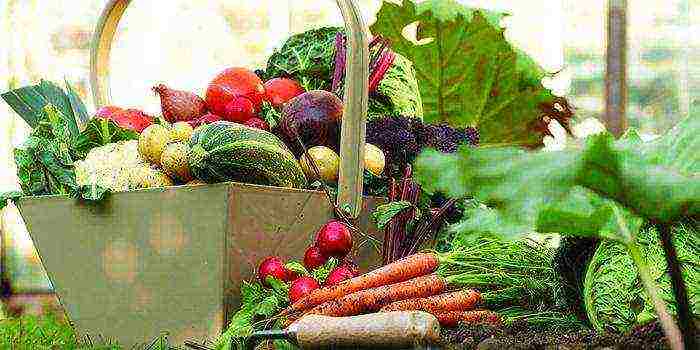
What herbs are grown in the shade?
While many herbs require ample sun, such as celery, parsley, mint, lovage, thyme, cilantro, and tarragon, they tolerate shade well and become even more aromatic.
As you can see, the lack of sun on the site is not an insurmountable obstacle for those who want to have a great vegetable garden. And what vegetables can be planted in the shade is up to you, especially since the choice is quite large.
Despite the rules prohibiting the installation of solid high fences between sites, many gardeners strive to protect their personal space as much as possible from prying eyes. A significant disadvantage of such privacy is the loss of a fairly decent landing area along the fence, both on one side and on the other. Also, shadow areas are formed by the walls of houses and buildings. Some leave a lawn in such places, but real gardeners, who are accustomed to benefit from the entire area, know what to plant in the shade in the country, which plants should be chosen in order not only to decorate the space, but also to get a harvest.
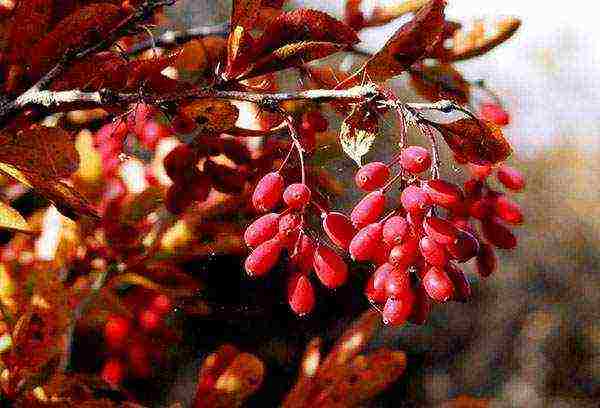
Shrubs
Perennial shade-tolerant shrubs are the best option for decorating areas of the garden where the sun does not look. Such plants do not require weeding and special care, and some varieties, in addition to performing a decorative function, even bear fruit.
Berry bushes
Many berry bushes feel quite comfortable being placed in the shade along the fences. The soil retains moisture, and a few hours during which the sun is in this zone, the plant is quite enough for the formation and ripening of fruits.
Barberry is very popular with gardeners. This shrub has high decorative qualities; healthy berries with an original taste also ripen on it. It multiplies easily, is unpretentious in care, tolerates a haircut well. A deaf shade for barberry is not recommended - the color of the leaf will become uniform and pale. In the southern regions, the shrub winters without loss, but in regions with a cool climate (including the Leningrad and Moscow regions), it is better to cover young plants, otherwise there is a high risk of freezing of the upper part of the shoots.
Barberry is not particularly picky about the acidity of the soil, but if it is too high when planting, it is better to add ash (about 100 g per bush).To create a hedge along the fence, plants are planted in a trench (2 bushes per 1 m).
Gooseberry is a versatile shrub for any area, and with good care and feeding, it not only gives sweet fruits, but also looks attractive. The plant tolerates shade well, but for the prevention of fungal diseases, it is recommended to carry out periodic treatments: in spring and autumn with copper sulfate, and during the summer with Fitosporin.
The decoration of the shady places of the garden not only in summer, but also in winter will be a snowberry. White large fruits (false berries) of this shrub remain on the branches for a very long time. In care it is completely unpretentious, winter-hardy.
Berry bushes such as irga, viburnum, honeysuckle and black chokeberry also tolerate shade well. And black currant does not like the scorching sun at all, so the places where it appears for only a few hours are the most optimal for it.
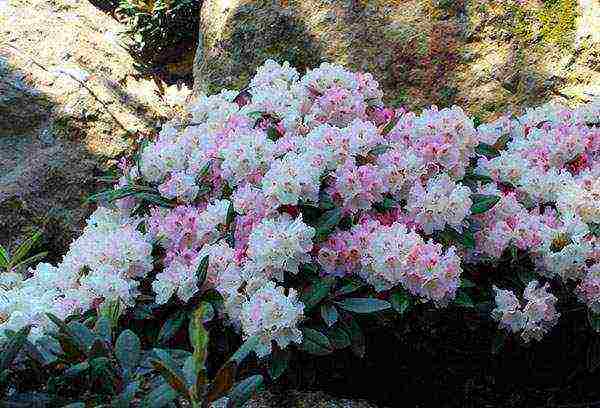
Flowering shrubs
One of the few plants that blooms and thrives in the shade is the rhododendron, the “rose tree”. Perennial winter-hardy varieties are mainly planted in summer cottages. For a rhododendron, those places of the site where the sun is until 11 am and at sunset are suitable - there will be no lush flowering in full shade. Shrubs can also be placed under spreading fruit trees, their openwork shade is ideal.
Rhododendrons are comfortable on acidic soils, therefore, when planting, needles are often poured into a hole. You cannot loosen and dig up the soil under these plants, since their roots are very close to the surface. For the same reason, it is recommended to insulate the shrub for the winter, covering it with a thick layer of needles.
Advice
Withered rhododendron inflorescences should be removed. This will enhance the ornamental qualities of the plant, accelerate the setting of buds for the next year and increase their number.
Shade and garden jasmine tolerates well. The shrub needs to be shaped regularly by pruning. Jasmine is unpretentious to the quality of the soil. During flowering, it exudes an intense aroma. In shaded areas, you can also plant honeysuckle (Tatar, common, alpine), Hungarian lilac, hydrangea.
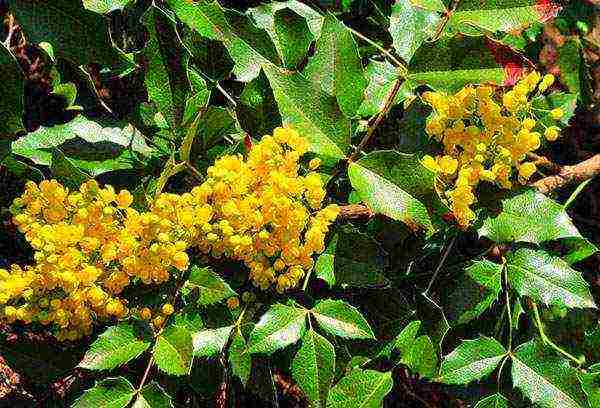
Ornamental deciduous shrubs
Many shrubs decorate the site with their foliage from spring to late autumn, without needing an abundance of sunlight.
We list the most popular of the shade-tolerant species.
- Euonymus. The plant feels great in the shade, especially the varieties "Sakhalin" and "sacred". Euonymus does not tolerate waterlogged soil.
- Magonia. It belongs to evergreen shrubs, its dense leathery leaves take on a red-brown color by winter. It blooms beautifully in spring, then forms fruits with a pronounced antibacterial effect.
- Derain (dogwood, svidina) is famous for a large number of varieties and high decorative qualities. The shrub is very unpretentious, it may well grow in the shade both near the fence and near the walls of houses, without losing color saturation. The lawn is undemanding to the soil, but it is preferable to plant it in loam with a loose structure.
- Elder. In the shade, this shrub reluctantly blooms and bears fruit, but forms a beautiful crown.
All the plants described above have many varieties, so when buying, you should choose zoned ones that are most adapted to the conditions of a particular region.
Flowers and ornamental plants
In the shaded areas of the site, pansies, forget-me-nots, lilies of the valley, irises and fragrant tobacco will develop well and bloom. But mostly decorative-leaved plants are planted.
- Brunner has a rich palette of colors and is unpretentious in care.
- Hosta is distinguished by a variety of shapes and colors of leaves. The blue and blue varieties prefer deep shade. In the second half of summer, the hosta throws out tall peduncles.
- Periwinkle is a brightly blooming perennial that quickly covers the area with air growth.
- Badan loves shading, forms whole carpets of dense leaves and blooms beautifully in early spring.
- Ledum - "forest rosemary", "swamp stupor" - fragrant and effectively blooming, but poisonous plant.
Various types of shade-tolerant and shade-loving plants can be purchased at the nursery. But there is also a completely inexpensive option - to walk to the forest belt, from where many resourceful summer residents bring their original "inhabitants" to their plots:
- fern - a plant with high decorative qualities, unpretentious and feeling great in the shade, looks very impressive, does not require maintenance and drowns out weeds;
- woods, forest violets, snowdrops, clefthoof (grow well only in moist soil);
- blueberries and blueberries.
Not everyone succeeds in taming the representatives of the forest flora, but in most cases the plants take root and master well in a new place. To reduce the adaptation time, it is better to carry them with an earthen lump, and it is most convenient to transport them in a wheelbarrow.
Advice
If the site is not only shaded, but also too wet, then you can create a kind of alpine slide for the plants: lay drainage in the first tier (branches, gravel, sand), in the second - turf, peat, small chips (for volume), on top - a layer of soil, and not necessarily fertile.

Vegetables
Shaded areas in the garden can also be used for planting vegetables, but with the condition that the sun appears there for at least a few hours. This can be a strip along the fence, north of the house. Some gardeners find that a number of crops grow even better in the shade than in fully open areas. However, the quality of the soil is an important factor. It should be loose enough, fertilized and moisturized.
The following types of vegetables will do well in shady places.
- Brussels sprouts and cauliflower. The best results are obtained when these crops are planted under apple tree crowns. It has been noticed that in partial shade, the cruciferous flea is much less attacked by the plants.
- Loves shaded areas of spinach. If the soil is fertile enough, then the bushes grow loose with strong juicy leaves, and in the sun they usually have a weak turgor, often turn yellow.
- Beet is a completely shade-tolerant plant. The root vegetables will be quite small, but sweet and of good quality. You can plant beets in the shade for the purpose of growing on tops, which contain a lot of nutrients, good in salads and soups.
- Radish and radish. These plants shoot in the sun, do not like long daylight hours, so the only chance to get juicy roots in summer is to sow vegetables in a shaded and humid place.
- Turnip prefers the same conditions as radishes.
- Jerusalem artichoke (earthen pear). Undemanding to lighting, at the same time it will decorate the site with flowering.
- Horseradish. Grows well in the shade, forming succulent large roots.
- Garlic. In shaded areas, this plant is less sick and turns yellow, but the teeth will be medium-sized.
Rhubarb feels good in the shade. If there is very little light, then its stems will be thinner and softer, but it is these that are well suited for various blanks.
Advice
You should not experiment with zucchini and cucumbers, although some claim that they grow well in the shade. In most cases, in such areas, not only does a normal harvest fail, but the plant itself turns out to be underdeveloped.
The region also plays an important role in choosing a vegetable crop for planting in the shade. In the south, melons, tomatoes and cucumbers grow quite decently in such places, and in the north, plants and in open areas, even in relatively warm summers, do not always have enough sun.

Herbs and herbs
Greenery does not like direct sunlight, so experienced gardeners do not allocate well-lit ridges for it, but plant similar plants under greenhouses, near fences, under trees, behind the house on the north side.
Shade-tolerant green crops include:
- parsley, cilantro;
- all types of lettuce, arugula, watercress;
- sorrel;
- wild garlic (in the wild, this plant lives in forests, so the shade for it is a natural environment);
- celery;
- perennial onions (various types of this plant can be planted on greens without losing the quality of the feather);
- dill in diffused shade does not form hard stems, the greens are tender and light;
- fennel.
Spicy herbs grow well in the shade: lemon balm, mint, tarragon, oregano, basil. You can try planting beans, peas and beans, but in this case, a lot depends on the quality of the soil: some have a good harvest, while others the plant is stretched and does not bear fruit.
The choice of planting material for shaded areas of the personal plot is quite large. You can sow the area with greenery or limit yourself to unpretentious shrubs - it all depends on the owner's preferences and imagination, as well as whether he has free time to leave.
Few regions can boast of a stable warm summer, and in cold and rainy weather, mold and fungi often form in the shade - vegetable plants will not develop, so you should not count on normal roots. So that the work does not become in vain, it is easier to plant tall shrubs such as chokeberry or viburnum in shaded areas, which are resistant to diseases, do not require cutting and maintenance.
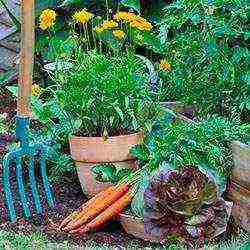 Any garden has sunny and shaded areas. Most cultures prefer the first option. However, experienced gardeners also successfully use those places where the sun's rays rarely look. In the article, we will tell you that from a huge selection of vegetables and herbs, you can plant in the shade in your summer cottage in the spring. Photos of the respective crops are attached.
Any garden has sunny and shaded areas. Most cultures prefer the first option. However, experienced gardeners also successfully use those places where the sun's rays rarely look. In the article, we will tell you that from a huge selection of vegetables and herbs, you can plant in the shade in your summer cottage in the spring. Photos of the respective crops are attached.
Why do plants need light and what greens do well with shade
Botanists have conducted a number of studies for a long time and found out that the sunshine color is the main energetic for plants. Only with its help can the formation of nutrients from water and minerals absorbed from the soil occur in all green parts. Due to this, the plant organism grows and develops.
It is also well known that some plants feel good only with a strictly defined amount of energy received, therefore they require growing exclusively in sunny places. Others easily adapt to low light conditions.
So, in shaded areas (near a fence or outbuildings), some spicy green crops grow very well:
- parsley;
- cilantro;
- celery;
- mint;
- melissa;

Greens feel great in the shade
- oregano;
- tarragon;
- cucumber herb.
Advice. If in open areas it is necessary to allocate more space for lovers of bright lighting, the listed plants can be safely moved to shading.
There are also advantages of growing greenery in the shade:
- The land dries out less, therefore, plants need less watering.
- Greens quickly become tough under the scorching rays of the sun. In the shade, its leaves retain their tenderness longer.
- In such places, much less weeds grow.
Vegetables that can be grown in the shade
Shade-tolerant vegetable crops include:
- rhubarb;
- tomatoes;
- almost all types of salads.
These plants can be easily grown under tree crowns in the garden. Rhubarb bushes do very well in the shade. The edible leaf stalks are fleshy and tasty here. The main thing is to organize regular abundant watering.
Advice. Propagation of rhubarb is best done with parts of the rhizome. So you can quickly get a harvest. When sowing with seeds, you will need to wait 2-3 years.
Tomatoes grow beautifully under the crowns of fruit trees, through which the sunlight is scattered like through a sieve. Moreover, in the case of such a landing, there is a mutual benefit:
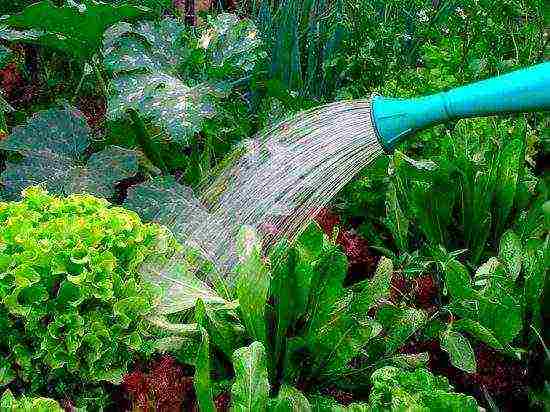
Tomatoes can be planted in the shade of trees
- Tomato trees are used as a support for a garter.
- On rainy days, much less water gets on their leaves, which protects against late blight disease.
- Protects the crown of the tree from the scorching sun - tomatoes do not suffer from burns.
- In turn, tomato plants scare off some pests of fruit trees with a strong specific smell.
- As a result of such a neighborhood, you can get a good harvest of fruits and tomatoes and trees.
A variety of lettuce varieties also perform well when grown in shade. In such conditions, the culture will not be able to grow large leaves, but they will remain tender longer and will not taste bitter, as it happens rather quickly in an open sunny area with the onset of hot days.
The same benefits can be gained by planting perennial bows, sorrel and wild garlic in shady areas.
Other shade-tolerant gardeners
The horseradish plant can be called the "king of the shadow." Here it feels great, grows and multiplies. Fans of spicy things will not have to allocate a plot of precious land for it in a sunny place in the garden, while infringing on other plants.
It is not worth planting horseradish under the trees, because its rhizomes will have to be deeply dug, which is highly undesirable to do in the root zone of other plants. A shaded place near a fence or near a building is suitable for the culture.
Advice. It is better to immediately restrict the place of planting horseradish with any obstacle dug into the ground. Otherwise, the overgrowth will be very difficult to stop.
If there is not enough space on sunny beds, then under the crowns of trees, you can organize the cultivation of beets. These root crops will not reach large sizes in shading, but, according to experienced summer residents, their taste will be softer. And it is much more convenient to use beets of this size in cooking.
If there is a shortage of space in shading, you can plant garlic. Again, you should not count on large sizes, but it is quite possible to prepare a spicy seasoning for the family.

Onions and garlic can be successfully grown in shaded parts of the garden
Some legumes have shown themselves well in the vicinity of trees. Climbing beans can climb quite high, using trunks and branches as support. Legume stalks that have died out in winter can be buried in the root zone, which will serve as a good fertilizer for trees.
What berries can be grown in the shade
Many berries grow in nature in the forest. Accordingly, the place under the trees in the garden is just the right thing for them. These include honeysuckle, viburnum, chokeberry, raspberries.
Currant is a plant in cool regions. The intense heat for her is certain death. Therefore, in the south, some have adapted to growing crops under the canopy of tall trees. Having received regular watering and protection from the scorching rays, the plant brings good yields.
Rosehip bushes can be safely planted near the fence. In the spring they will delight you with delicate flowers. In the autumn, you can not only admire the bright fruits, but also use them as an excellent vitamin supplement.
Often, summer residents try to use every piece of land with maximum benefit. Therefore, the possibility of growing some crops in the shade comes in handy. There are a lot of plant options, in addition to the ones listed above. You can always choose the right one and achieve the desired result for yourself.
Planting plants in the shade: video
 Any garden contains light and shaded areas that can change during the day. However, some areas are always filled with sunlight, while others are constantly in the shade. In addition, this shadow often falls from structures located in the garden. In this case, crops such as peppers, zucchini and tomatoes should not be planted in shaded dark areas. Almost all other vegetables, subject to certain rules, will provide the summer resident with an excellent harvest.
Any garden contains light and shaded areas that can change during the day. However, some areas are always filled with sunlight, while others are constantly in the shade. In addition, this shadow often falls from structures located in the garden. In this case, crops such as peppers, zucchini and tomatoes should not be planted in shaded dark areas. Almost all other vegetables, subject to certain rules, will provide the summer resident with an excellent harvest.
Is sunlight good for plants?
Root crops in the form of carrots, beets and other plants are very fond of good light and warmth. In this situation, the vegetables will turn out to be large and juicy. But during cultivation, it will be necessary to create favorable growing conditions for them. Green vegetables and plants feel great in the shade - cabbage, lettuce, cucumbers, radishes, mustard, spinach. All these crops can be safely planted in shaded areas of the garden. The main advantage of this action is saving time, since moisture in the shade is retained longer, which means that watering will be required less often. Onions and garlic here will not be subject to shooting, which can also be considered a significant advantage.
In partial shade, eggplants feel great, despite the fact that they are most often grown in the southern regions. You can also plant cucumbers or corn here. In the case of a cool climate in a shaded area, cover the beds or shrubs with a spunbond at night. This condition will help to retain moisture and heat inside the beds.
In the case when the shade is too large and dark, you can grow radishes using hanging, vertically arranged beds. In this situation, it is recommended to plant beets together with spring perennial crops, which will go deep into the ground by the summer season. Replacing one plant with another in the shade can occur in any situation.
Growing beets and cabbage in the shade
In the event that a shaded area has a sufficiently large area, beets must be planted in the simplest beds, moreover, choosing a direction from east to west. If the plant lacks light, then the east-located cultures will absorb it in the morning. This amount is enough for crops to develop during the afternoon. Any type of cabbage can be planted in the same way. But broccoli is especially unpretentious. It can be planted even in the absence of light or its diffusion. Flowering cabbage in too damp ground works very well. However, during this period, a lot of weeds are formed next to the plant. Therefore, the summer resident will have to regularly weed such beds.
Shade for phytoncides
The most favorable area for growing onions will be a shaded area. This vegetable does not require constant and abundant watering, does not begin to shoot in the month of July, which is very often seen when it is grown in too sunny and arid zones. Greens can grow well in the shade throughout the summer season. Garlic also grows well in similar conditions, although it has its own characteristics. This vegetable requires abundant watering and regular ventilation.
Greenery and shade
Many culinary herbs, more precisely, almost all of its varieties, in particular lettuce, celery, mint and others, grow best in partial shade. Here greens always acquire a delicate taste and a pronounced pleasant aroma. In addition, when harvesting, you will notice that the greens are strong and crispy. These herbs add great flavor to your meals. Greens love sunlight, but in a diffused form. Thinning and watering with a large volume of water are considered the main conditions for her care. For this reason, the selection of semi-shaded areas will be a favorable factor for growing such crops.
What should be considered when planting a particular crop in the shade?
Firstly, the area of residence is of particular importance when growing garden and vegetable crops in the shade. He can make various adjustments to the correct growing conditions for vegetables and fruits in the shade or in the light. For example, in some areas cold and moisture prevail, while in others, on the contrary, hot and dry weather. All this plays an important role when choosing the crops that you want to plant on the site.
Secondly, it is worth paying attention to the amount of light as well.There are completely shaded areas (shadow from structures in a vegetable garden or garden) or partial shade (when the sun is on one side in the first half of the day, and the other on the other). Third, the quality of light is always different. It can be absent-minded, complete, or absent altogether.

